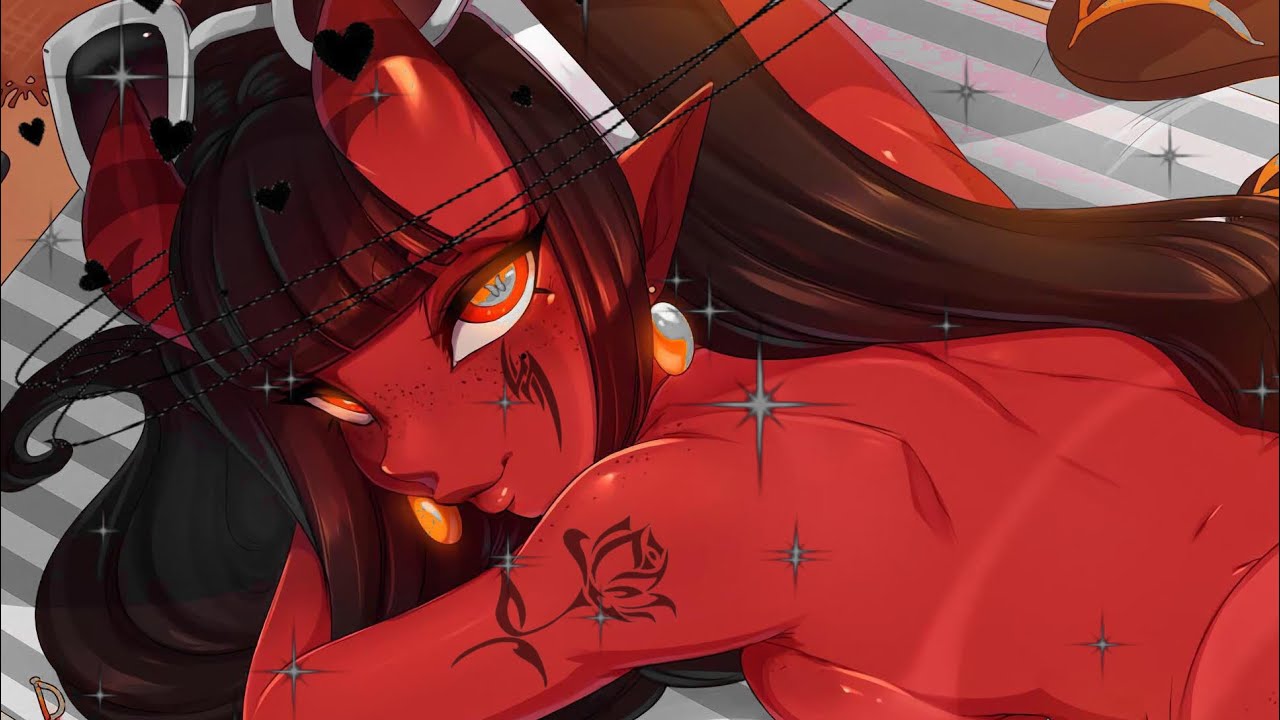Succubi have fascinated humans for centuries, embodying the mysterious intersection of desire, danger, and the supernatural. Among these captivating
Succubi have fascinated humans for centuries, embodying the mysterious intersection of desire, danger, and the supernatural. Among these captivating figures, Meru the Succubus stands out as a modern incarnation that blends traditional lore with new narrative depth. This article explores Meru’s origins, powers, personality traits, and why she continues to captivate audiences in fantasy stories and popular culture.
Must visit: primedomainhub

Understanding the Succubus Archetype
To appreciate Meru, one must first understand the succubus archetype. The term “succubus” originates from medieval Latin succuba, meaning “to lie under.” Succubi are female demons or spirits believed to seduce men, often while they sleep, sometimes draining their life energy. This concept traces back to ancient Mesopotamian and medieval European folklore.
Historically, succubi were seen as dangerous and malicious entities. They symbolized temptation, lust, and sin, often blamed for nocturnal emissions, sleep paralysis, or other unexplained phenomena. Over time, however, the depiction of succubi has softened, evolving in literature, games, and anime into more complex and sometimes sympathetic characters.
Who is Meru the Succubus?
Meru is a fictional succubus character who has gained popularity in modern fantasy settings. Unlike the purely malevolent succubi of old, Meru’s character is often multifaceted—blending seduction with innocence, power with vulnerability. She represents a fresh take on the succubus mythos, appealing to audiences who crave deeper character development beyond one-dimensional evil.
Meru’s exact backstory varies depending on the creator or medium. She might be portrayed as a young succubus learning to navigate the human world, or as a mischievous spirit with a hidden past. What remains consistent is her magnetic allure and her ability to captivate and challenge the characters around her.
Origins and Creation of Meru
Meru does not have ancient mythological roots but rather emerges from modern fantasy and anime-inspired storytelling. Her creation reflects the trend of reinventing classical demon figures for new generations, often blending dark fantasy with elements of romance, drama, and comedy.
Some speculate that Meru’s character design and personality draw from popular Japanese media tropes, such as the “moe” aesthetic (cute, endearing characters) combined with supernatural elements. This fusion results in a succubus who is not only seductive but also relatable and emotionally engaging.
Visual Appearance and Symbolism
Meru the Succubus is often illustrated or described with striking features that emphasize her dual nature—both alluring and otherworldly:
- Horns: Small, curved or pointed, symbolizing her demonic heritage.
- Wings: Usually bat-like, sometimes delicate and translucent, signifying her supernatural abilities.
- Tail: A slender, whip-like tail that flicks expressively, often used to indicate mood.
- Eyes: Large and expressive, ranging from mischievous glints to moments of deep emotion.
- Clothing: Her attire typically blends sensuality with fantasy aesthetics—corsets, dark lace, or magical robes that enhance her mystique.
Meru’s look balances innocence and seduction, often using contrasts such as youthful facial features with mature or provocative clothing to highlight her complex identity.
Powers and Abilities
As a succubus, Meru possesses several signature powers, often adapted or expanded depending on the story:
- Seduction: The ability to captivate and enchant others through charm, voice, and physical allure.
- Dream Manipulation: She can enter and influence dreams, creating illusions or extracting secrets.
- Energy Drain: Traditionally, succubi drain life force or energy from their targets, though Meru may use this power sparingly or symbolically.
- Shapeshifting: Some versions depict her ability to change appearance, often to better suit her goals or disguise herself.
- Magic: Depending on the narrative, Meru might wield magical spells, curses, or healing powers, making her more versatile than a simple temptress.
These abilities allow Meru to be both a threat and an ally, depending on her motivations.
Personality and Character Traits
Meru’s personality distinguishes her from traditional succubi who are often portrayed as purely manipulative or evil. Common traits attributed to Meru include:
- Playfulness: She enjoys teasing others but rarely in a cruel way. Her antics are more mischievous than malicious.
- Curiosity: Meru often shows fascination with human emotions, culture, and behavior, sometimes leading to awkward or touching interactions.
- Empathy: Despite her demonic nature, she can feel compassion or loneliness, making her character more relatable.
- Independence: Meru values her freedom and resists being controlled by others, embodying a strong will.
- Vulnerability: At times, Meru grapples with her identity or the stigma of being a demon, adding layers of depth to her story.
This complexity allows Meru to fit various narrative roles—from a comic relief sidekick to a tragic anti-heroine.
Meru’s Role in Stories and Media
Meru the Succubus appears in a variety of modern fantasy contexts, including:
- Anime and Manga: She often features as a supporting character or love interest with supernatural origins.
- Video Games: Meru can be an NPC (non-playable character), boss, or companion with unique quests and storylines.
- Fan Fiction: Many creators write original stories about Meru, exploring themes of redemption, identity, and romance.
- Art and Cosplay: Meru’s distinctive look makes her a popular subject for fan art and cosplay events.
Her presence across media reflects a growing interest in nuanced supernatural characters that defy stereotypes.
Themes Explored Through Meru
1. The Nature of Desire
Meru embodies desire in its many forms—physical, emotional, and existential. Her interactions challenge characters to confront their own wants and fears, making desire a central theme.
2. Identity and Otherness
As a demon living among humans or caught between worlds, Meru’s story often tackles what it means to belong and how others perceive those who are different.
3. Power and Vulnerability
Meru’s powers grant her strength, but her vulnerabilities reveal her humanity. This duality makes her a compelling figure for stories about resilience and self-discovery.
4. Morality and Redemption
Some narratives explore whether Meru can overcome her dark nature or find redemption, questioning the rigid lines between good and evil.
Why Meru Resonates with Audiences
Meru the Succubus appeals to modern audiences for several reasons:
- Complexity: Unlike traditional succubi, Meru is a multi-dimensional character with emotional depth.
- Aesthetic Appeal: Her design combines beauty with fantasy, attracting fans visually.
- Relatable Themes: Her struggles with identity and acceptance mirror human experiences.
- Flexibility: She can fit into many genres, from horror and romance to comedy and drama.
This versatility makes Meru a beloved figure in fandoms and creative communities.
Common Misunderstandings About Meru
- Meru is always a villain: Not true. She often acts with good intentions or conflicting motives.
- Meru seduces only for evil: Many portrayals show her forming genuine connections.
- Meru is an ancient myth: She is largely a contemporary creation inspired by older succubus legends.
- Meru’s powers are limitless: Her abilities vary by story and usually come with limitations.
Understanding these points helps appreciate Meru’s richness as a character.
The Evolution of Meru in Future Media
As fantasy and supernatural genres continue evolving, Meru the Succubus is poised to grow in complexity and popularity. Future depictions might explore:
- Her origins: Deepening her backstory and cultural roots.
- Relationships: Developing more nuanced interactions with humans and other supernatural beings.
- New powers: Expanding her abilities in innovative ways.
- Social commentary: Using Meru to explore issues like identity, marginalization, and empowerment.
The potential for creative reinvention ensures Meru’s lasting appeal.
Frequently Asked Questions (FAQs)
1. Is Meru the Succubus a character from mythology?
No, Meru is a modern fictional character inspired by the traditional succubus myth but created largely in contemporary fantasy media.
2. What powers does Meru have?
Meru typically has seductive charm, dream manipulation, energy draining, shapeshifting, and magical abilities, varying with the story.
3. Does Meru always act as a villain?
No. Meru’s role ranges from antagonist to sympathetic character or even heroine depending on the narrative.
4. Where can I find stories about Meru?
Meru appears in anime, video games, fan fiction, and fantasy art communities, especially those focused on supernatural or demon characters.
5. What themes does Meru’s character explore?
Her stories often focus on desire, identity, power, vulnerability, and redemption.
6. Why is Meru popular among fans?
Because she is a complex, visually appealing character who challenges traditional demon stereotypes and embodies relatable emotions.
Conclusion
Meru the Succubus is a unique and intriguing evolution of the classic succubus figure. Her blend of seductive charm, emotional complexity, and supernatural power makes her a rich subject for storytelling and creative expression. As fantasy worlds continue to expand, Meru’s presence promises to offer fresh perspectives on age-old themes like temptation, identity, and redemption. Whether you encounter her in a game, anime, or fan-created tale, Meru invites you to explore the shadows where desire and vulnerability intertwine.

COMMENTS